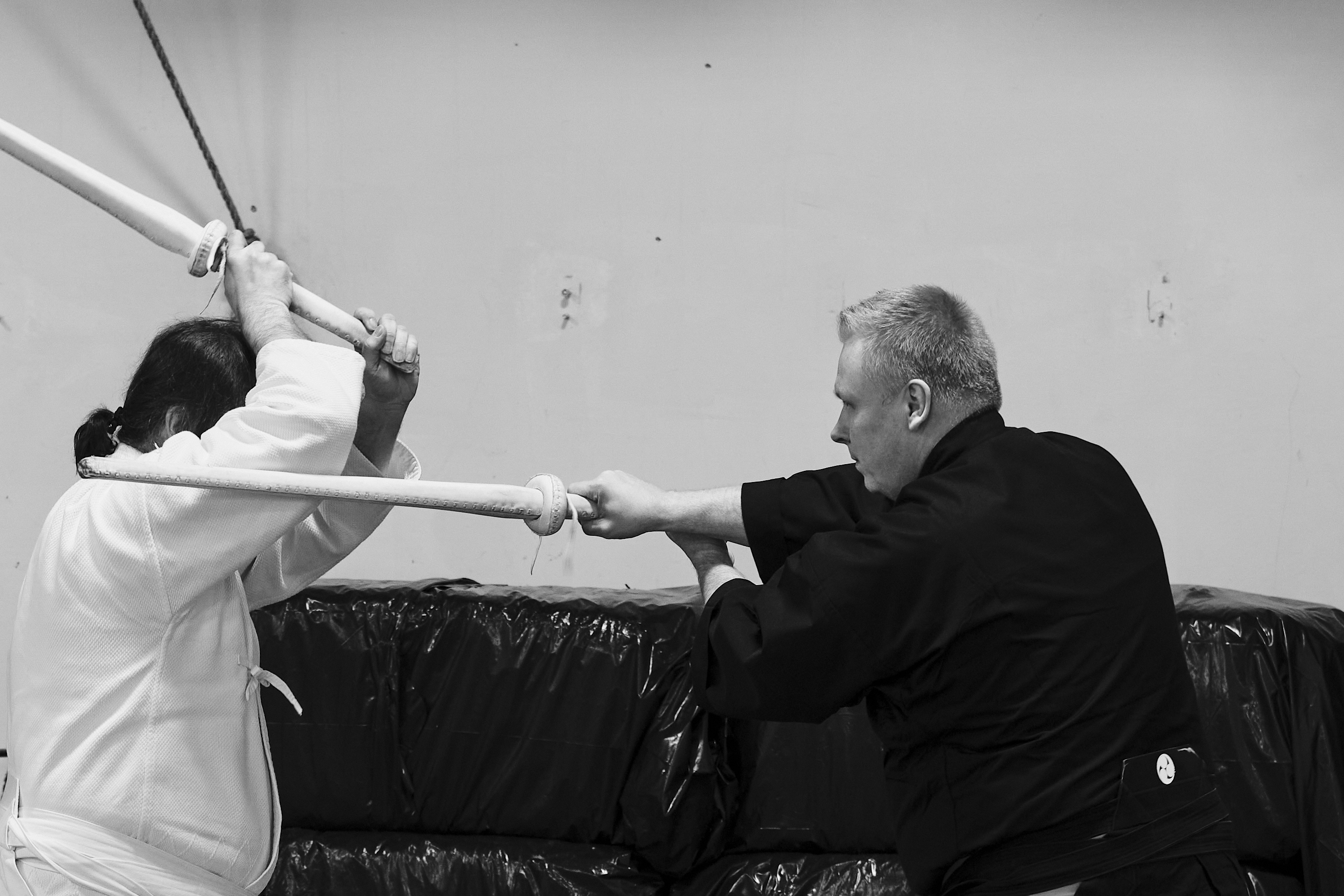Enren: Circling Continuously
Updated:
An example of the deconstruction of kata. Kuzushi is the name for the activity of pulling apart and analyzing kata in Shinkage-ryū, making connections between different parts of its curriculum. It also at times can refer to sudden, spontaneous, change.
While attending Kagami Biraki at Lonin in 2025, I filled in for one of my senior students, who was ill and unable to attend. I joined in the enbu of kata, performing the To-no-kata and Kodachi sections of formal Jikishinkage-ryū curriculum. I tried to provide a strong amount of pressure (seme) and felt our offering of kata exhibited the resolve I am attempting to cultivate through Shinkage-ryū practice.
The second portion of Jikishinkage-ryū kata practice is called to no kata and consists of 14 short partner forms. I have been thinking of them
as comprising several sections. The second part of the last
kata in the set is called enren (
In enren, the uchikomi is a randori-like practice of repeated cutting against a target. It is a nice form of moving suburi and demonstrates lateral movement otherwise missing in the rest of the curriculum. However, it is done cryptically, where one cuts on a line of attack not associated with any combative meaning. It seems, on the surface, to be pressure testing without a path that leads into developing combative ability. It is true the movements are hard to execute as uchi and shi look to be doing the same thing but in reality are not. They are performing different motions (one yin and one yang) that balance each other. In that way, the capstone kata is teaching that the concept of kage or shadowing, like yin relating to yang or solid to transparent, can be more complex than simply balancing posture or stance against a particular static kamae an adversary adopts.
Subtleties aside, what the uchikomi in practice often provides is a very difficult ending to the sequence of kata when performed continuously. Uchidachi has to extend their kiai to signal to shidachi the repeated cutting is about to end, which breaks the meaning and purpose of having an uchidachi vs. shidachi role (which Jikishinkage-ryū is otherwise very good at maintaining compared to some other arts). Uchidachi should be pushing shidachi, not aiding them. But without that coordination, it is not possible to end the repeated sequence smoothly.
In our case, the ending of the sequence happened out of rhythm for some reason and shidachi realized they would be struck. They dodged, but from my perspective it was as if they had disappeared right before my attack was to land. This is a skill Shinkage-ryū is supposed to cultivate — done properly the practitioner disappears suddenly from view. The patron deity of Shinkage-ryū, Marishiten (Marici), is the Buddhist goddess of light and thought to grant the siddhi or genjutsu of invisibility. Suddenly disappearing for a moment, in coordinated tai-sabaki and sword movement, is an example of this kind of skill.
When this happened, I struck with full force and found only empty space instead of shidachi's shinai held out as a makiwara. Because we were moving fast and light for the repeated uchikomi, I was holding my training implement (the shinai is not actually a weapon) too lightly. Not finding a target and maintaining my posture, the shinai went flying from my hands. Good that I did not lose my balance — bad that my weapon went flying from my hands like an arrow shot into the ground.
In the moment, having lost my weapon but not my posture, I maintained zanshin and reverted to unpō — advancing slowly and strongly to drive shidachi back, albeit without a weapon. Had shi attacked while I was unarmed, I could have accepted the cut, to end the kata, or attempted to respond. As it was, he mirrored my movements. Really, anything could have happened.
Afterwards, I moved back two steps and knelt to retrieve my weapon and continued to move away, doing my best to mentally keep forward pressure the whole time. We wound up manifesting, spontaneously, a section of kata from the final section of Jikishinkage-ryū called marobashi, which my partner has never seen. Usually it is shidachi advancing, with kodachi against tachi, but the spirit was the same. In that moment, my tactical failure was an opportunity to keep zanshin despite the shock of having something go suddenly, unexpectedly, wrong.
Developing shidachi to the point they can win is the purpose of to no kata.
